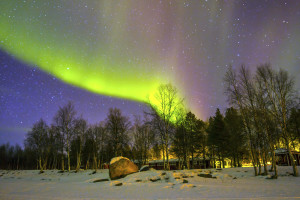
On March 30, 1867, the United States purchased Alaska from the Russian Empire for $7.2 million, or approximately two cents per acre. The area went through several administrative changes before becoming recognized as a territory on May 11, 1912. It was admitted to the union as the 49th state on January 3,1959.
It is the largest U.S. state by area and the 3rd least populous state in the U.S. It is the northernmost and westernmost state and has the most easterly longitude in the U.S. because the Aleutian Islands extend into the Eastern Hemisphere. With its myriad islands, Alaska has nearly 34,000 miles of tidal shoreline.
Business Climate
Alaska’s economy is dominated by the fishing, natural gas, and oil industries, resources which it has in abundance. United Sates armed forces bases and tourism are also a significant part of the economy.
Due to the northern climate and short growing season, relatively little farming occurs in Alaska. Most farms are either in the Matanuska Valley, about 40 miles northeast of Anchorage, or on the Kenai Peninsula, about 60 miles southwest of Anchorage. The short 100 day growing season limits the crops that can be grown, but the long sunny summer days make for productive growing seasons. The primary crops are potatoes, carrots, lettuce, and cabbage. Agricultural production is primarily for consumption within the state, and also includes nursery stock, dairy products and livestock.
Manufacturing is limited, with most foodstuffs and general foods imported from elsewhere. Its industrial outputs are crude petroleum, natural gas, coal, gold, precious metals, zinc and other mining, seafood processing, timber and wood products.
Tax Climate
Alaska does not administer an individual income tax. The top corporate income tax rate is 9.4%.
For its apportionment factor, Alaska uses an average of three factors: property, payroll, and sales. Alaska uses the cost of performance method for the sourcing of services and intangible property.
The Alaska Department of Revenue, Permanent Fund Division is responsible for determining applicant eligibility for the distribution of an annual dividend that is paid to Alaska residents from investment income of mineral royalties. The annual payment allows for Alaskans to share in a portion of the State minerals revenue in the form of a dividend to benefit current and future generations. Eligibility to receive a Permanent Fund Dividend is defined by the Alaska Legislature through Statute and Regulation. The amount of the dividend for 2019 was $1,606 and was paid to residents on November 21, 2019. For more information on this fund, click here.
Sales Tax Structure
Alaska is one of five states that does not tax administer a sales tax. However, several municipal governments do. Therefore, if you are a business entity subject to sales tax within the state, you will need to contact the local municipal government for their particular sales tax regulations and forms. This information can be found here. For example, Anchorage does not administer a sales tax, but Juneau does at 5%.
Random Facts
- Alaska has 591,000 square miles (375,000,000 acres) and is double the size of the next largest state, Texas.
- The Iditarod Trail Sled Dog Race is a famous 1,000 mile race from Anchorage to Nome each February. The Iditarod record was set in 2011 by John Quniaq Baker (also the first native Inupiaq to win the race) in a time of 8 days, 19 hours, 46 minutes, and 39 seconds.
- The name Alaska is derived from an Aleutian word alaxsxaq which literally means the “object toward which the action of the sea is directed.” The Russians called it Alyeska.
- Alaska is the only U.S. State to produce platinum. Half a million ounces have been placer mined from southwestern Alaska since the first platinum was discovered there by an Eskimo named Walter Smith in 1926.
- Originally established as the Alexander Archipelago Forest Reserving 1901, Tongass National Forest covers almost the entire southeastern Alaska panhandle, making it the largest national forest in the United States.
- Turnagain Arm, an Alaskan fjord along the southern boundary of Chugash State Park, has one of the highest tidal variations in the world at 32 feet (10 m).
- The spectacular Malaspina Glacier in Alaska’s Wrangell-St. Elias National Park and Preserve is almost 50% larger than the state of Delaware.
- The Red Dog Zinc mine in northwest Alaska is the world’s largest zinc producer.
- Cape St. Wales, the site of the Eskimo village of Wales, is mainland North America’s farthest west point and is just 56 miles from Cape Dezhnev, mainland Asia’s farthest east point.
Our team at Miles Consulting Group is available to discuss the specifics of your state tax situation, whether in Alaska or other states, we can help you navigate the complex tax structures arising from your multistate operations. Call us to help you achieve the best tax efficiencies.



















